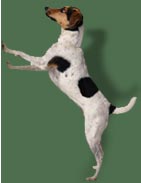 |
|
|
Your bird’s cage is more than a place to escape and hide. Your bird will play, eat, and sleep within the cage and they can become very territorial of their “nest”. Where to Locate Your Bird First, determine where the cage will be located. This should be in an area that is a hub for the family but not the kitchen. Your kitchen can contain nonstick-coated cookware that when heated emits fumes that are lethal to your bird. Put their cages in a room that is well ventilated without being subjected to extreme cold or heat. Unless some sort of shade is available, do no locate the cage in direct sunlight. Overheating or out of season molting may result if no shade is available for your bird. Keep the cage out of beak-reach of household plants, electric cords, forbidden food, and at least 10 feet away from the television. Televisions can have sudden loud noises that can startle your bird and cause nervousness. In the case of smaller birds (i.e. budgies, finches) sudden, loud noises have been known to cause heart attacks. Additionally, a cage should be placed out of reach of any other pets you may have or small children until they know how to safely handle your pet. Remember, Birds are messy and a bird’s size will depend upon the size of the mess. No matter what the size of your new bird, there is going to be some degree of food that is dropped on the floor or even splattered on the walls. Where you located the cage will also depend on where you are willing to let the mess fall. Lay down a washable area rug or piece of linoleum under the cage to catch droppings or food. Suggested Minimum Cage Dimensions Purchase the largest cage you can afford and that will accommodate the space you have designated as your new bird’s home. At the very least, the bird must have room to fully extend and flap its wings without coming into contact with cage bars, perches, or toys. Long-tailed birds require cages tall enough to accommodate their tails comfortable and small birds must have room to fly about if they get nervous. Allow for enough room for toys that you may add and other accessories. The following is a guide for size dimensions, check with your breeder or pet information section for additional information dependant upon the species. Budgies Small Flighted Birds such as Canaries or
Finches Conures, Lovebirds, Cockatiels or birds of
similar size Amazon Parrots, African Greys and Small Cockatiels Large Cockatoos and Macaws
Bar spacing is another consideration when selecting the correct
cage. Bars must be close enough together so that your bird will
not get its head caught in between the bars. Bars must be nonconvergent
to reduce risk of trapping toes and limbs. Small birds can be housed
in wire cages but large hooked bill birds must be house in cages
with adequately welded steel or wrought iron. The cage should also
have horizontal bars or supports for climbing. Budgies, Finches, Parrotlets, Canaries,
Lovebirds Cockatiels, Small Conures, Small Parrots Amazon Parrots, Small Cockatoos, African
Greys or similar size Macaws, Large Cockatoos, Large Amazons or similar By standing on the same perch day after day, its feet can become sore and even lame. Thus it is important to supplement the basic round dowel type perch with and oval or flat perch in a slightly different diameter. It’s not recommended to take branches from the outdoors to supplement because we do not know if they have been treated with pesticides that can be harmful to our pets. Keep in mind that perches aren’t just for standing. Perches made from chewable materials also satisfy a bird’s need to chew so do not be alarmed if their perches shows signs of this behavior. Swings and ladders can also be counted as perches. The motion of a swing mimics the sway of a tree branch and encourages exercise and play. Ladders encourage climbing and natural acrobatics in your bird and provide and outlet of excess energy as well as exercise. Types of Perches • Concrete Blend-Excellent for blunting the nails or honing the beak. Should not be the only perch within your cage. Use as a supplemental perch. • Rope-Discard after heaving soiling and watch for unraveling or fraying by your bird. • PVC-Easily cleaned and cost effective to natural perches • Wood-Offers secure footing and does not conduct heat or
cold. When equipping your new cage, don’t forget food and water dishes as well as a dish for bathing if your species requires. You will need at least three dishes: • Seed/Pellets
Birds are intelligent animals that need stimulation. Without the stimulation provided by you through toys, they can turn that attention inward in the form of self-mutilation or excessive chirping. These toys provide not only the mental but in some cases physical stimulation and ward off bad behaviors. Rotate the toys in and out so as not to prevent boredom. Safety should be your first feature when selecting a new toy for your bird. Keep in mind the following when selecting a new toy for your bird: • Look for smoothly finished and welded chain with links
large enough to prevent from trapping toes A cover won’t actually raise the temperature inside the cage, its can prevent chills from drafts. If you have located your cage in the center of the family area, a cover will provide privacy so that your bird will get an adequate amount of sleep. You can also place a small covered area within the cage for privacy as well. Covers should be made of smooth cotton fabric. |
||
| Bird owner's
checklist: What you need prior to bringing home your new bird |
|||
| Species Information | |||
| Housing |
|||
| Health | |||
| Nutrition | |||
| Links to other sources of bird information |
 |